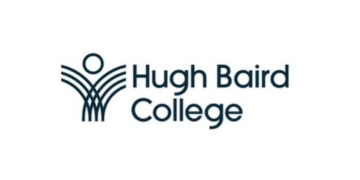A new expert group has been formed to find solutions to help prevent children from “losing learning”, after research found 32 million days were lost to unauthorised absence and exclusions last year.
Chaired by ASCL general secretary Pepe Di’Iasio, the council will bring together experts and leaders including Sir Dan Moynihan, chief executive of Harris Federation and Liz Robinson, chief executive of the Big Education academy trust (see full list below).
Over the next six months, the ‘Who’s Losing Learning Solutions Council’ will hear evidence from school leaders, parents and organisations to find “promising work” with potential to become national policy solutions for mainstream schools across the next two parliaments.
Kiran Gill, chief executive of The Difference, a school leadership charity supporting leaders to reduce absence and exclusion, said the panel would be “hearing evidence on how mainstream schools can evolve to better serve the needs of all children – especially those struggling with their mental health.
“Many teachers and school leaders are stepping towards this challenge, and innovating in their classrooms and communities.
“But too often they are doing this against the tide of the incentives around them, without the professional development and practice sharing they most need or at a remove from the services they need most to collaborate with.”
32 million days of learning lost
A new report by IPPR and The Difference found 30.5 million days were lost to unauthorised absence in 2022-23 while 1.5 million days were lost to suspensions.
The total, 32 million, was up 72 per cent from 19 million in pre-pandemic 2018-19.

Researchers for the first time defined “lost learning” as “academic and social education missed by children when they are out of class, out of school or moved out of their local community setting”.
The report refers to an “exclusions continuum” covering 14 types of “lost learning”, including exclusions, suspensions and unauthorised absences. But it also included elective home education, toilet trips and lateness to lessons.
Researchers found poorer children, those known to social services, children with SEND or mental ill health and those from some ethnic minority backgrounds “disproportionately experience” missed learning.
For instance the poorest students, who get free school meals, were nearly five times more likely to be permanently excluded and four times more likely to be suspended than their peers.
Schools grapple with ‘internal truancy’
Government data published in July found suspensions had risen sharply again, with exclusions now also above their pre-pandemic rate.
New Teacher Tapp data commissioned for today’s report found 95 per cent of secondary schools reported grappling with internal truancy – attending school but not lessons.
In addition, nearly one in five schools were using part-time timetables to help children struggling in school.
Researchers pointed to councils spending “increasing amounts” on educating children outside of mainstream schools.
For instance, there has been a sharp rise in spending on independent special schools and rising numbers of children in unregistered alternative provision.
New analysis by Pro Bono Economics estimated the lifetime cost to the economy per child associated with permanent exclusion, “made up of extra education and youth justice costs, alongside reduced earnings and raised unemployment” was £170,000.
Central government “must now go further to tackle the injustices across the exclusions continuum. To reduce lost learning and pressure on council spend, mainstream schools must be better equipped to support children with a wider range of needs.”
Gill said: “We should all be worried about the social injustice that the most marginalised children – who already have the biggest barriers to opportunity outside of school – are those most likely to be not in classrooms through absence, suspension and exclusion.”
Who is sitting on the new council?
Dave Whitaker, chief education officer at Wellspring Academy
Dr Peter Fonagy, CEO of Anna Freud Centre and head of psychology at UCL
Ellie Costello, director at Square Peg
Elroy Cahill, head of portfolio and partnerships at Lift Schools
Florence Kroll, director for children’s services in Greenwich
Gerry Robinson, executive headteacher at Haringey Learning Partnership
Jane Fletcher, chief executive officer at Aldridge Education
Jonny Uttley, chief executive officer at The Education Alliance
Kiran Gill, chief executive officer at The Difference (secretariat)
Kiran Mahil, deputy headteacher at Central Foundation Girls’ School
Leora Cruddas, chief executive officer at the Confederation of School Trusts
Liz Robinson, chief executive officer at Big Education
Patrick Cozier, headteacher and trustee of Give Racism the Red Card
Pepe Di’Iasio, general secretary at ASCL (chair)
Professor Carlene Firmin, department of sociology at Durham University
Dame Rachel de Souza, children’s commissioner
Rachel Sylvester, chair of the Times Education Commission
Sir Dan Moynihan, chief executive officer of Harris Federation
Revd Rose Hudson-Wilkin, Bishop of Dover
Tom Rees, chief executive officer at Ormiston Academies Trust















Your thoughts